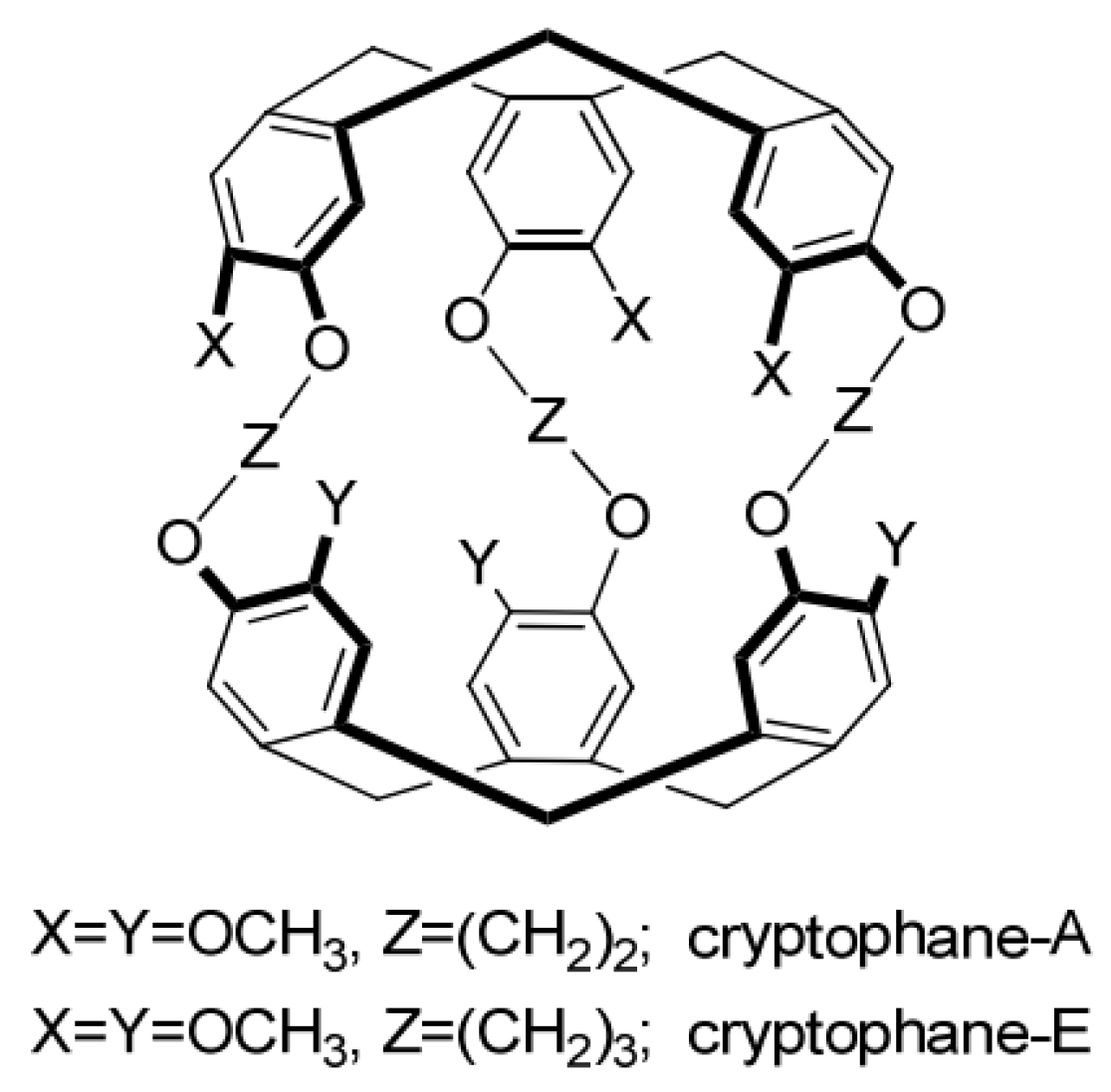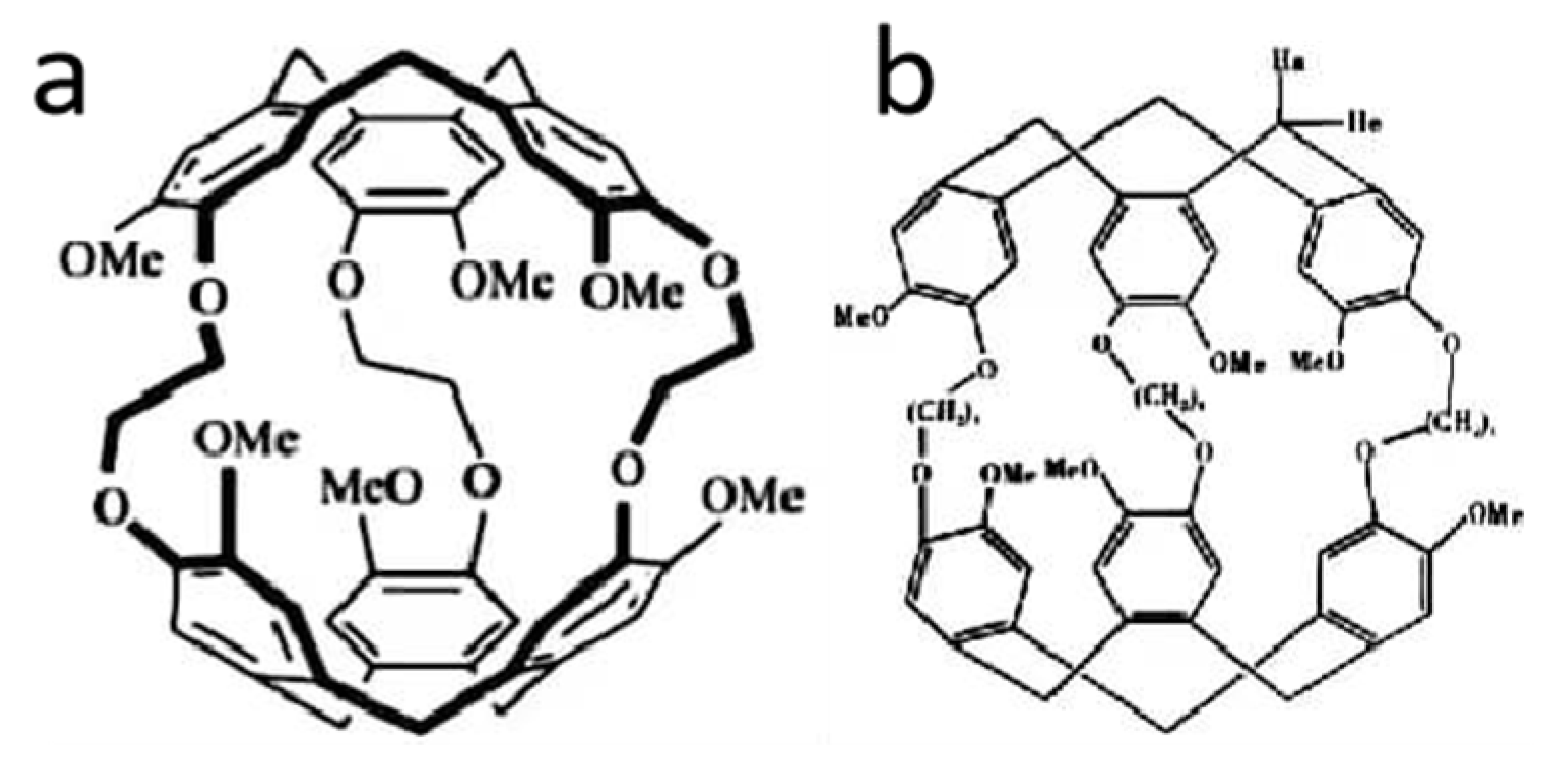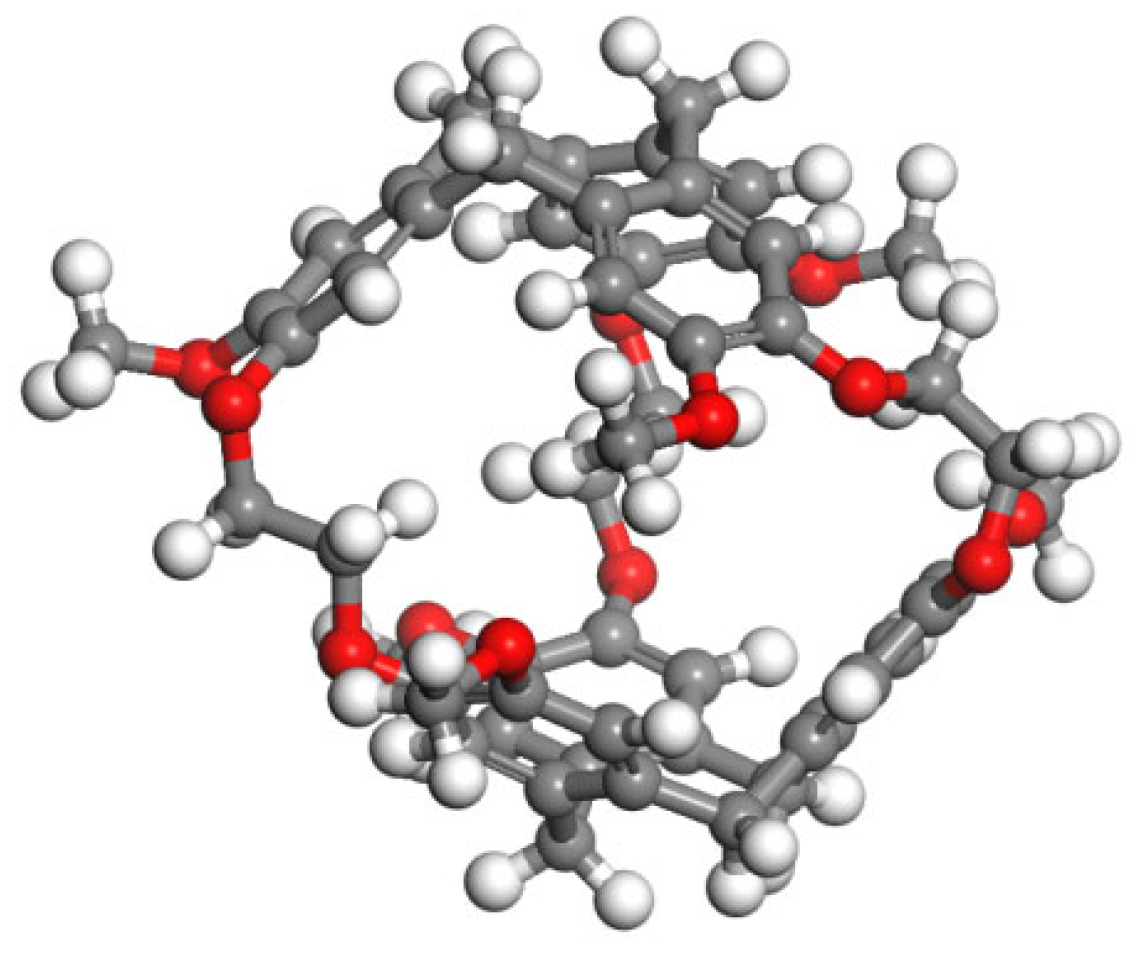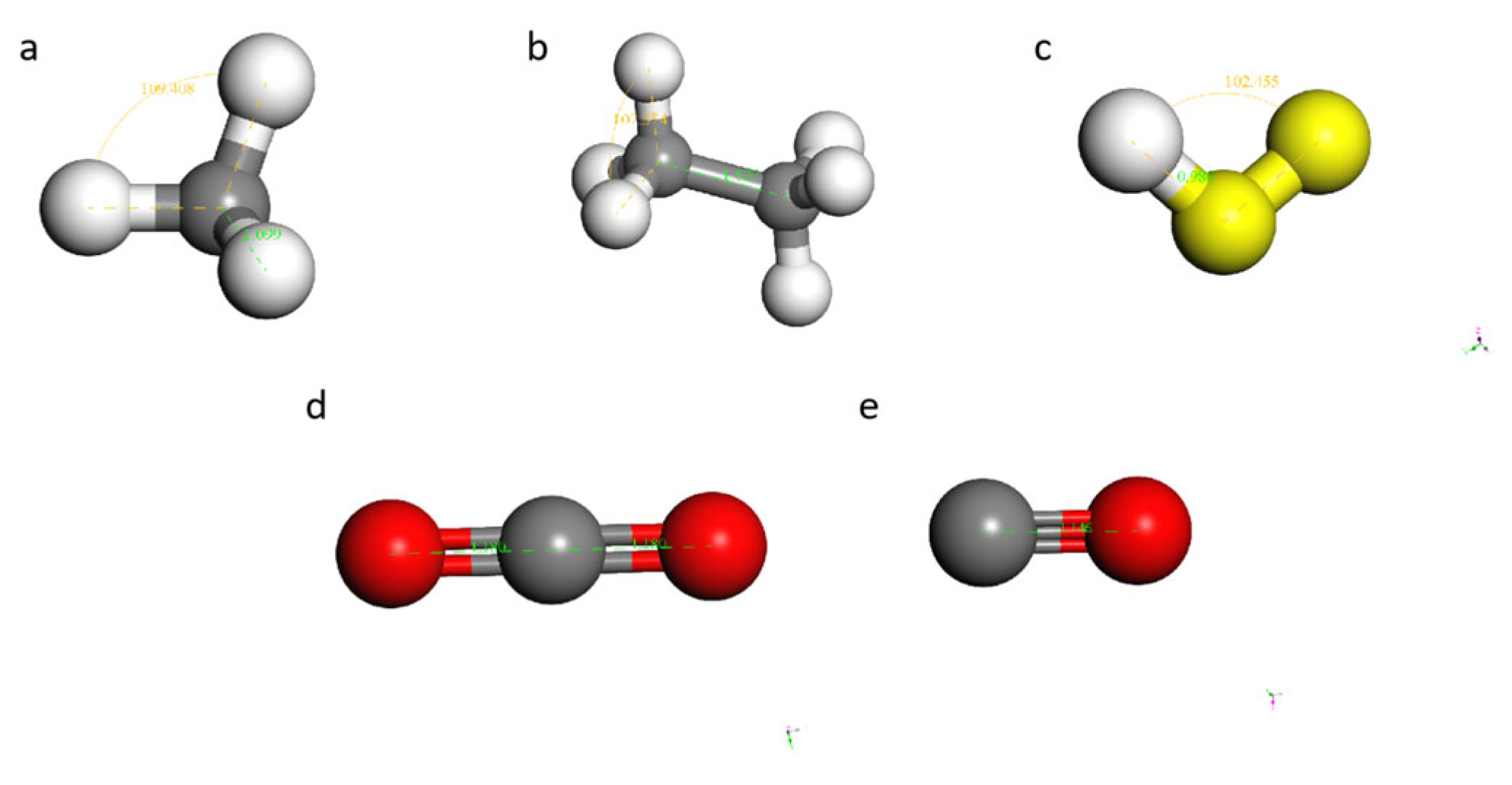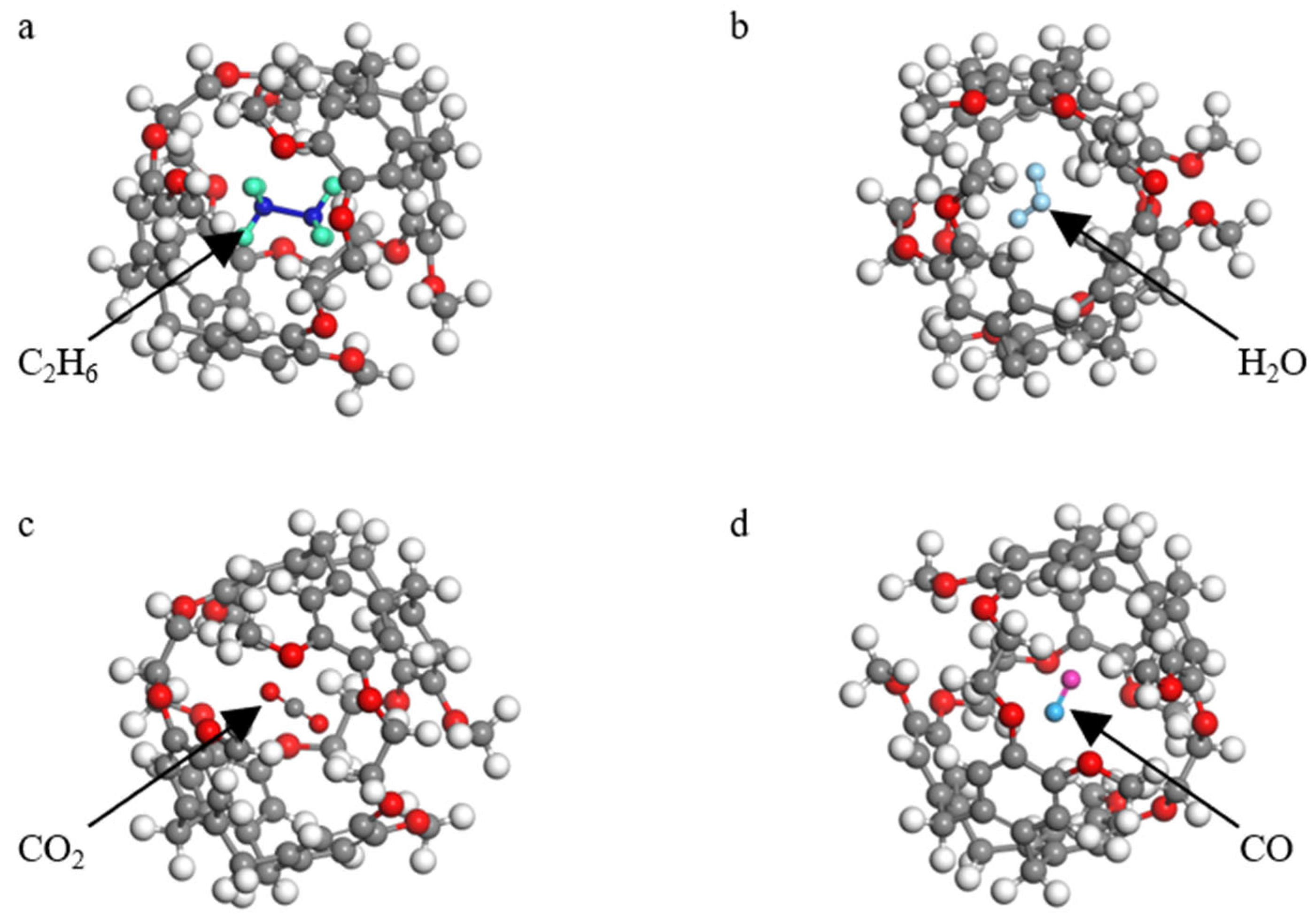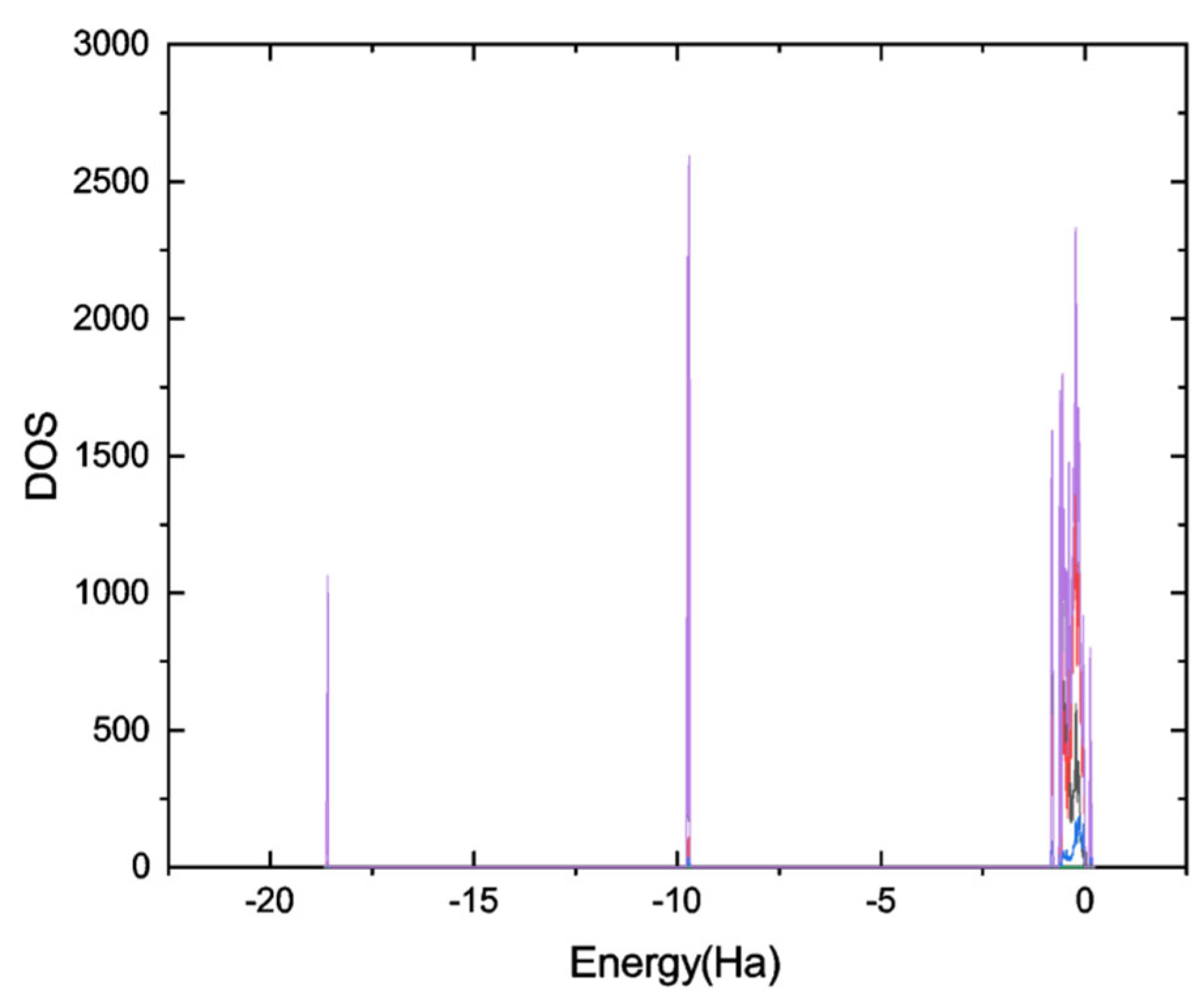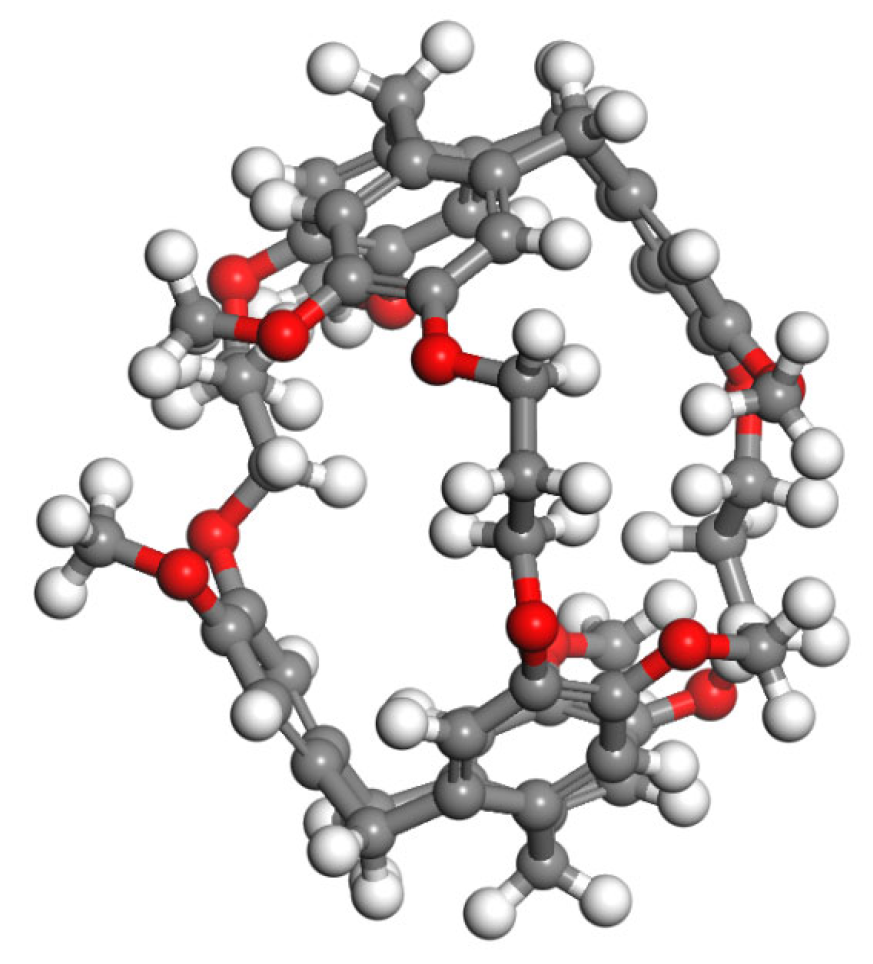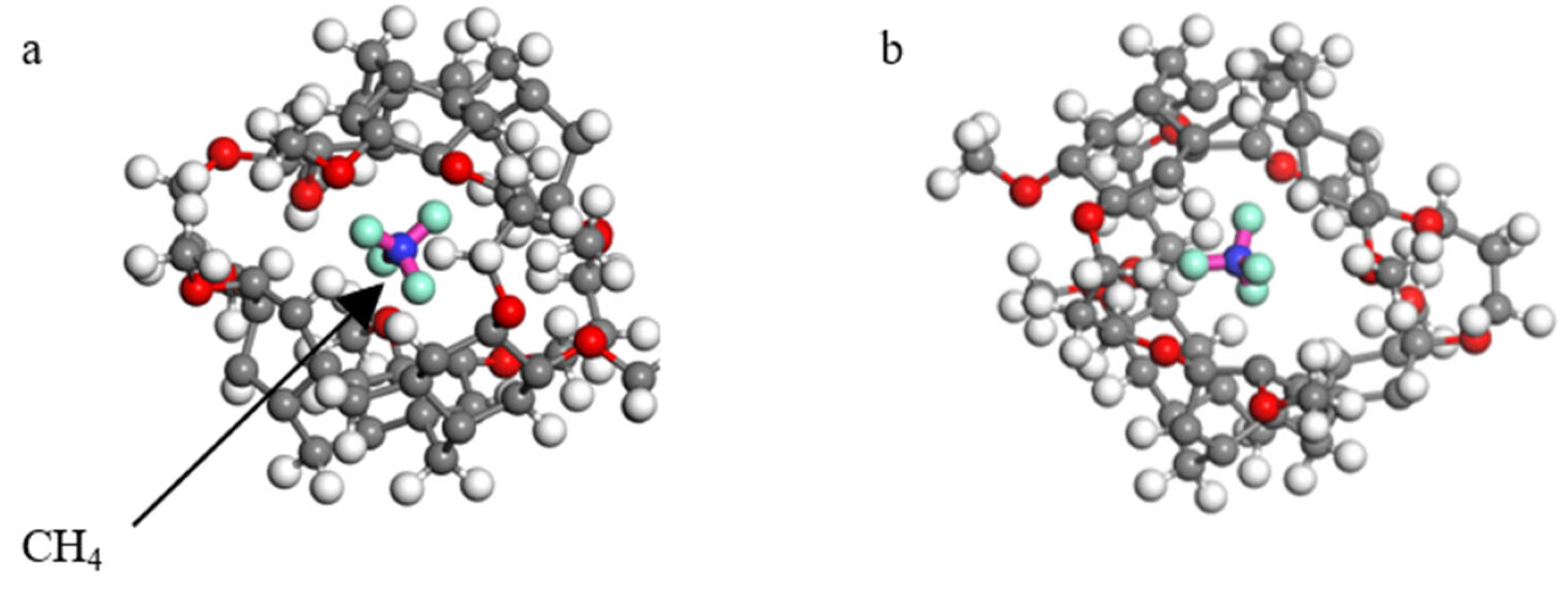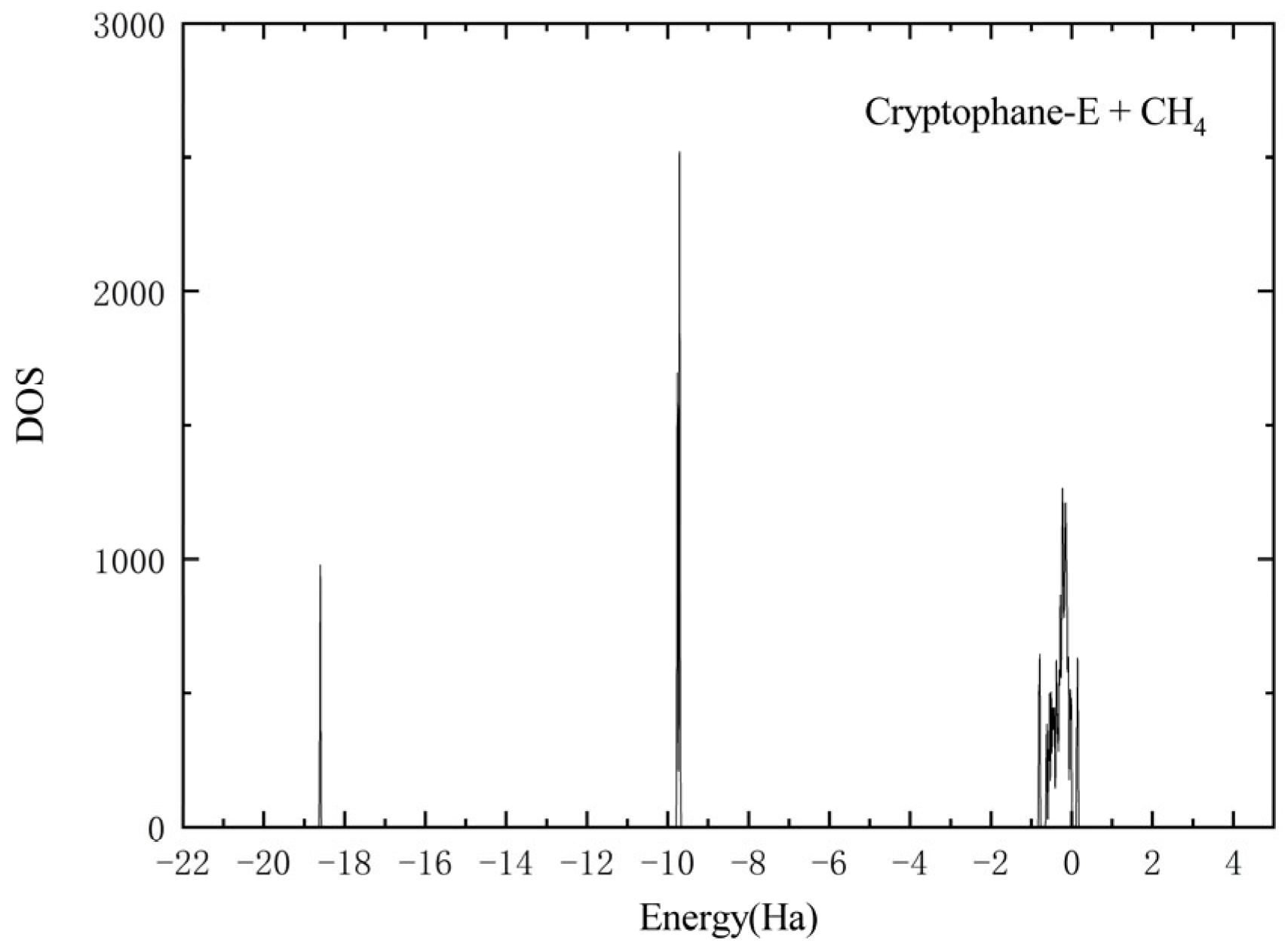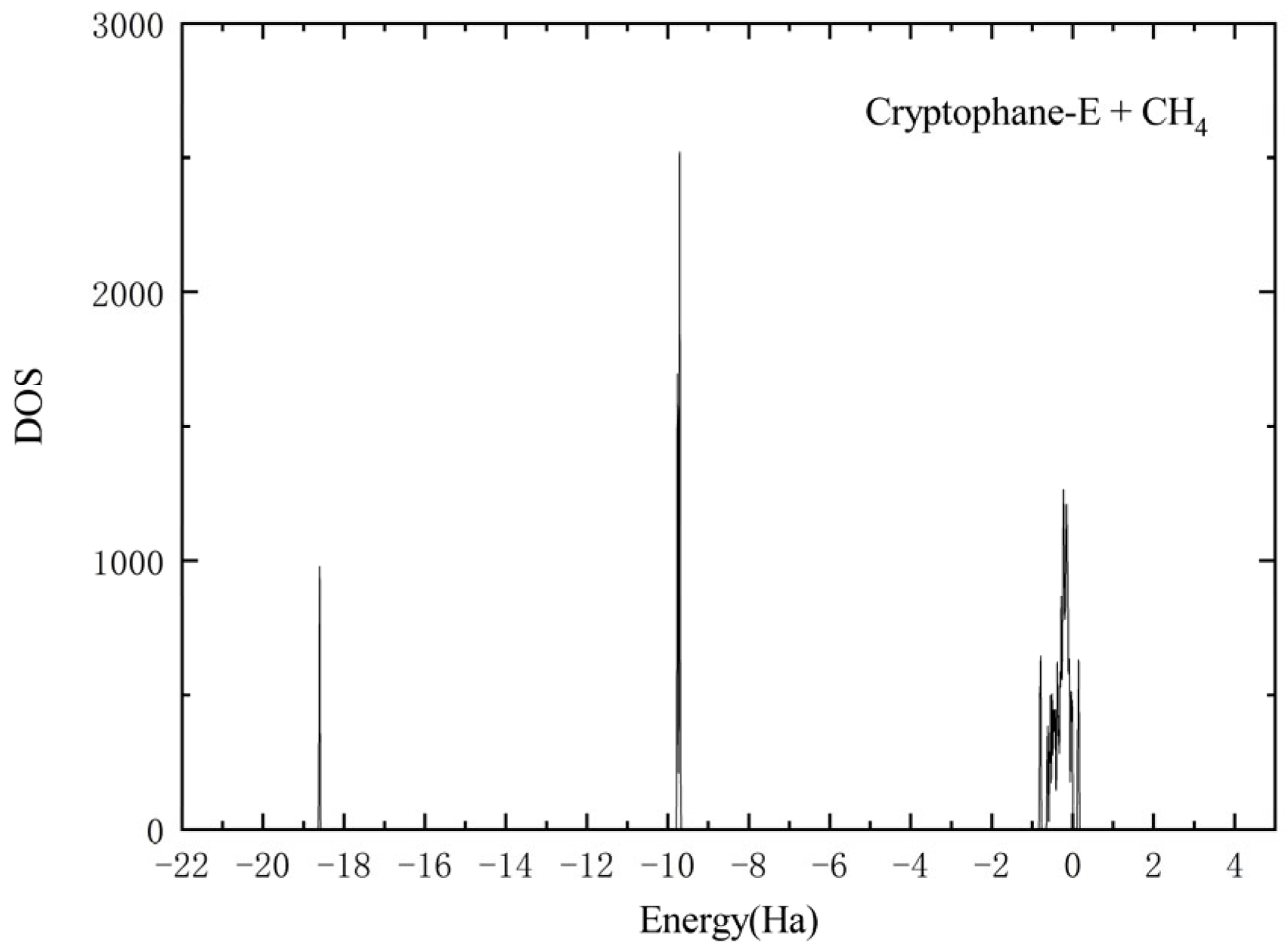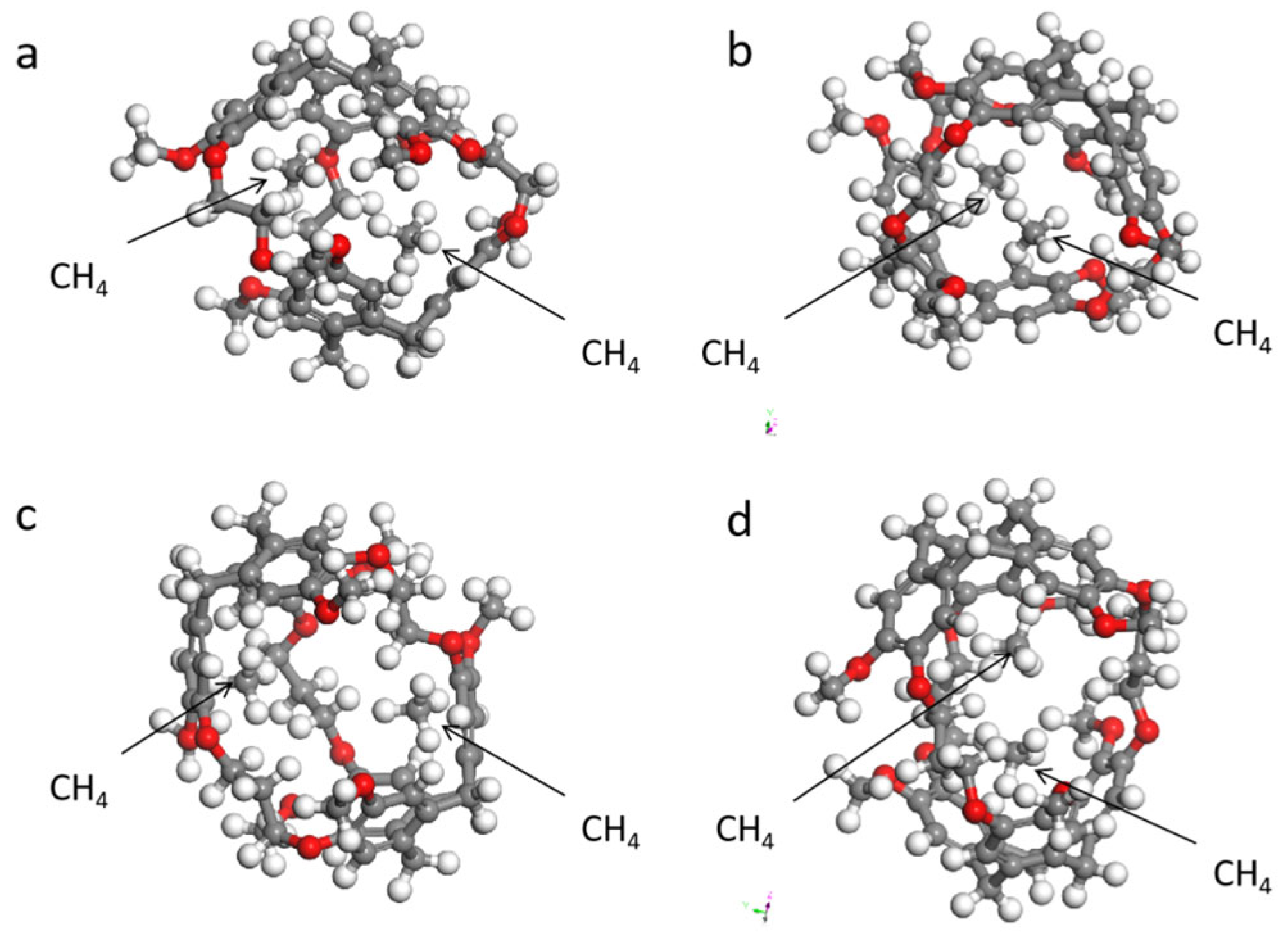1. Introduction
Methane (CH
4) is the second most abundant anthropogenic greenhouse gas after carbon dioxide (CO
2) and has a significant impact on global climate [
1]. Methane, with 21 times the global warming potential of carbon dioxide, significantly contributes to extreme weather events such as heatwaves, droughts, hurricanes, and rising sea levels [
2]. At the same time, methane is also the main component of mine gas, and if the methane gas in the mine is not properly disposed of, it is easy to cause the spread of fire and even cause gas explosions [
3], which can easily cause major economic losses and safety accidents. Therefore, the development of highly sensitive and selective methane gas sensors is of critical importance.
The current mainstream technologies include catalytic combustion sensors based on the oxidation reaction of methane on the catalyst surface. However, high temperature and usage of overvoltage higher than the rated voltage may permanently damage the sensor [
4]. Infrared absorption sensors utilize the characteristic absorption peaks of methane in specific frequency bands with high accuracy, but they are bulky and not portable [
2]. Metal-oxide-semiconductor (MOS) sensors are oxidized or reduced by a sensitive material by the gas to be measured, which is manifested as a change in resistance value. However, metal oxide sensors typically require a high operating temperature (400–500 °C) [
5,
6]. Metal oxide sensors can enable methane monitoring at room temperature through a photoactivation route [
7]. Mass-type sensors (such as quartz crystal microbalance (QCM) and surface acoustic wave (SAW)) detect by the mass change caused by gas adsorption. They have the advantages of operating at room temperature, low power consumption, and integrability. The basic principle of methane sensors is to coat a chemically selective film on the SAW propagation path that has specific selectivity for the gas to be detected. The adsorption of the gas to be detected on the sensitive film directly causes disturbances in the SAW propagation characteristics (velocity/amplitude), and the characteristics of the gas to be detected are combined with the frequency signal output and the oscillator structure [
8]. All these parameters can be used for monitoring applications in industrial environments, including structural health monitoring (SHM) for the control/predictive maintenance of parts/structures [
9].
Methane is a stable non-polar molecule, which is difficult to be adsorbed by conventional materials [
9]. Studies have found that cave fan is a caged supramolecular compound with a special encapsulation effect on methane molecules [
10]. The core challenge is to develop sensitive materials with a high affinity for methane. Caged supramolecular materials are an important new class of materials with important roles in materials science, molecular electronics, sensors, and other fields. The inclusion of neutral small molecules such as methane and ethane by cryptophane has been intensively studied, and in particular, methane detection technology based on the inclusion of Cryptophane and methane molecules has attracted much attention because of its high selectivity [
9,
10,
11,
12,
13,
14,
15,
16]. Jianchun Yang et al. [
16] studied a photonic crystal fiber (PCF) methane sensor based on modal interference, which is made by coating an ultraviolet, curable fluoro-siloxane nano-film incorporating Cryptophane-A onto the internal surface of PCF cladding air holes. French scientists A. Collet and J.-P. Dutasta demonstrated the ability of Cryptophane-A to encapsulate methane and form complexes by nuclear magnetic resonance spectroscopy (NMR) studies [
16]. YANG et al. [
17] studied a highly sensitive photonic crystal fiber long-period grating sensor for detecting methane. The sensor is based on polyacrylic acid carbon nanotubes/polyacrylamide hydrochloride nanofilm and absorbs Cryptophane-A-6me. When the CH4 volume fraction increases from 0 to 3.5%, the sensor exhibits a sensitivity of 107.8 nm and a detection limit as low as 0.0018. The important absorbing substance Cryptophane-A-6me plays a key role in the detection mechanism of the sensor. In recent years, with the in-depth study of Cryptophane molecules, a caged supramolecular compound, Cryptophane-A and -E, has been found to have a specific encapsulation effect on methane molecules, which is promising to be applied to the sensitive membrane of SAW gas sensors.
It has been shown that when methane molecules enter the cavity of the Cryptophane molecule, they can form a three-dimensional cavity consistent with the three-dimensional structure of the methane molecule through specific bonding, forming a “key-lock”-like one-to-one host–guest inclusion in the form of molecular imprinting, thus enabling accurate identification of methane gas. Khoshaman et al. [
18] and Sun et al. [
19] combined the cavity-fan-A and quartz crystal microbalance (QCM) technology to develop a new methane sensor for room temperature operation and achieved good results. However, this QCM-based gas sensor is easy to saturate [
20], and the test results show that it is saturated when the methane volume fraction is greater than 0.2%, which makes it difficult to meet the practical requirements of underground gas detection and alarm. In order to make up for the adsorption effect of Cryptophane-E on methane and to select a more suitable material for SAW sensitive membrane among Cryptophane-A and -E, the scientific problem needs to be solved.
The core challenge is to develop sensitive materials with a high affinity for methane. In this article, the adsorption of Cryptophane-A and -E on methane is studied by using the first nature principle [
21]. The molecular morphology changes during the synthesis of Cryptophane-A and -E are understood by analyzing the fabrication and reaction process. The reaction process was calculated by combining spin polarization and exchange-correlation flooding to analyze the morphological changes of Cryptophane-A and -E and gas molecules before and after the reaction and to investigate the reaction mechanism [
22]. The adsorption of methane and other molecules in the gas was calculated by Cryptophane-A and -E, and the changes in the density of states of each substance before and after the reaction were analyzed, and the adsorption capacities of Cryptophane-A and -E for CH
4, CO, CO
2, C
2H
6, and H
2O present in the gas were finally concluded and compared. The results showed that Cryptophane-A showed higher affinity for CH
4, with preferential adsorption and higher selectivity; Cryptophane-E had the same adsorption capacity for CH
4, H
2O, and CO, which could not be distinguished effectively. The results of the study make up for the lack of research on CH
4 adsorption effect of Cryptophane-E and innovatively apply the numerical simulation method to create ideal experimental conditions, deepen the theoretical study, and supplement and explain the physical processes and phenomena that cannot be observed experimentally. The comprehensive analysis shows that Cryptophane-A is more suitable for the detection of CH
4 gas in gas than Cryptophane-E, so Cryptophane-A can be used as a sensitive membrane material for SAW methane sensors. At the same time, it provides a direction for the selection of gas-sensitive materials for SAW methane sensors in the future, provides an experimental basis and data support for future research in this direction, can reduce the experimental trial and error rate improve the experimental efficiency, and greatly improves the comprehensive performance of these sensors, which is of great significance for future research and development in this field and improves the practical application value of the sensors.
4. Conclusions
In this paper, the physical models of caged supramolecular materials, Cryptophane-A, Cryptophane-E, and coal mine gas (CH4, CO, CO2, H2O, and C2H6), were developed and geometrically optimized to find the optimal adsorption sites for methane molecules by combining exchange-correlation flooding calculations. The density changes and adsorption capacity of Cryptophane-A\E are compared, and the following conclusions were drawn:
Cryptophane-A exhibits exclusive Van der Waals adsorption behavior for CH4, CO, and H2O, while showing no adsorption for CO2 or C2H6. The lowest adsorption energy for CH4 (followed by CO and CO2) indicates that Cryptophane-A has preferential selectivity for CH4 adsorption with the optimal binding site localized within the cavity.
Negligible total density of states variation upon CH4 adsorption highlights Cryptophane-E’s inferior selectivity. In the comparison of adsorption energy, CH4 is similar to CO and H2O adsorption energy, i.e., it is not possible to effectively distinguish the three gases mixed in the gas.
Both Cryptophane-A and Cryptophane-E show higher adsorption energy for single-CH4 than dual-CH4 systems. Cryptophane-A outperforms Cryptophane-E in overall adsorption capacity, while Cryptophane-E exhibits unstable adsorption for dual-CH4 configurations.
This article goes through numerical simulations. Compared with the selectivity and adsorption stability of methane in Cryptophane-A and Cryptophane-E, the Dmol3 module is optimized to achieve high-precision detection of methane gas. Cryptophane-A’s superior CH4 selectivity and adsorption stability for CH4 molecules compared to Cryptophane-E means that Cryptophane-A is more suitable as a sensitive membrane material for SAW methane sensors. This work provides a foundational framework for advancing Cryptophane-based materials in gas detection, with future research prioritized on multi-CH4 (>2 molecules) adsorption dynamics to optimize sensor performance and scalability.

